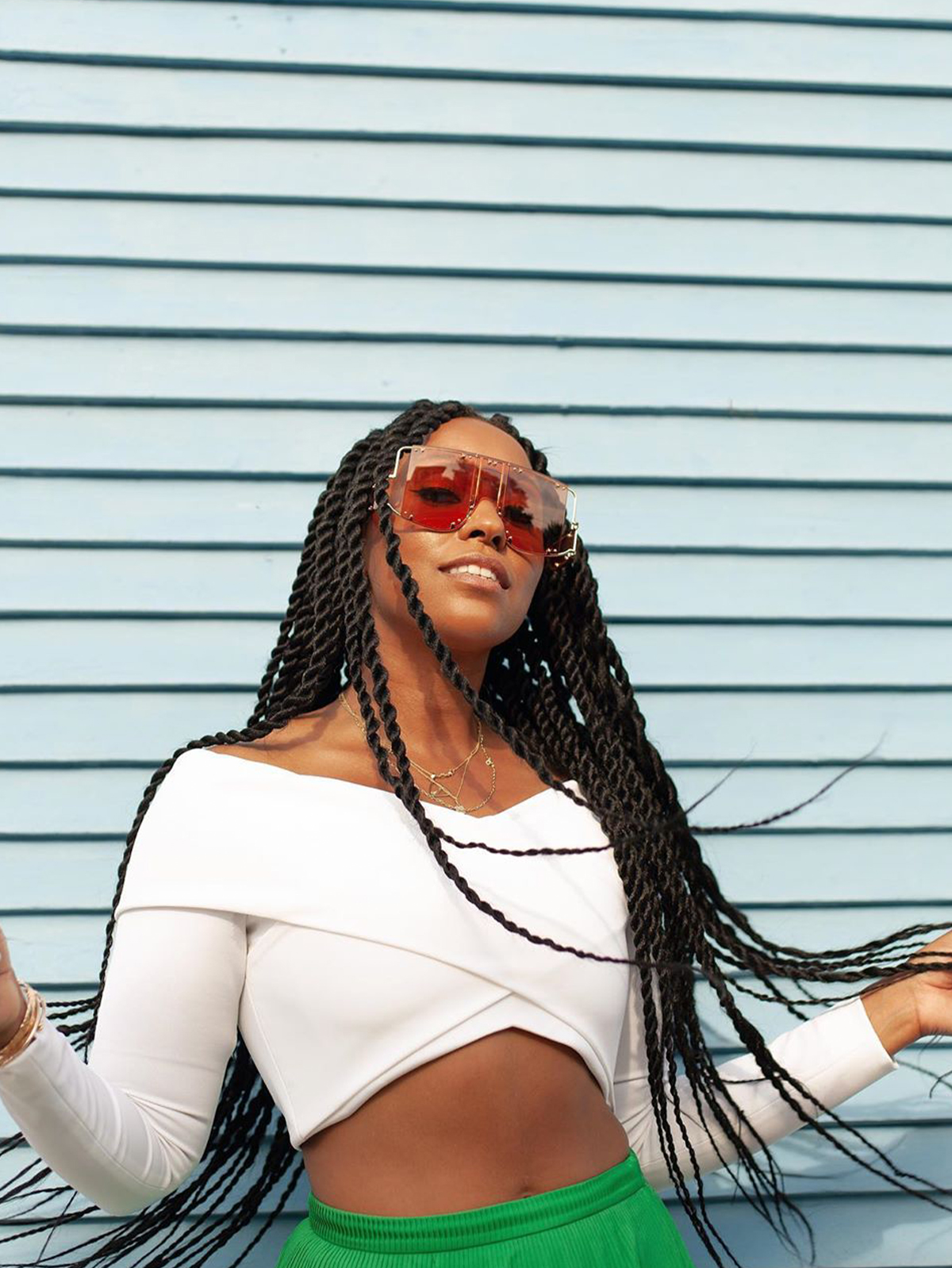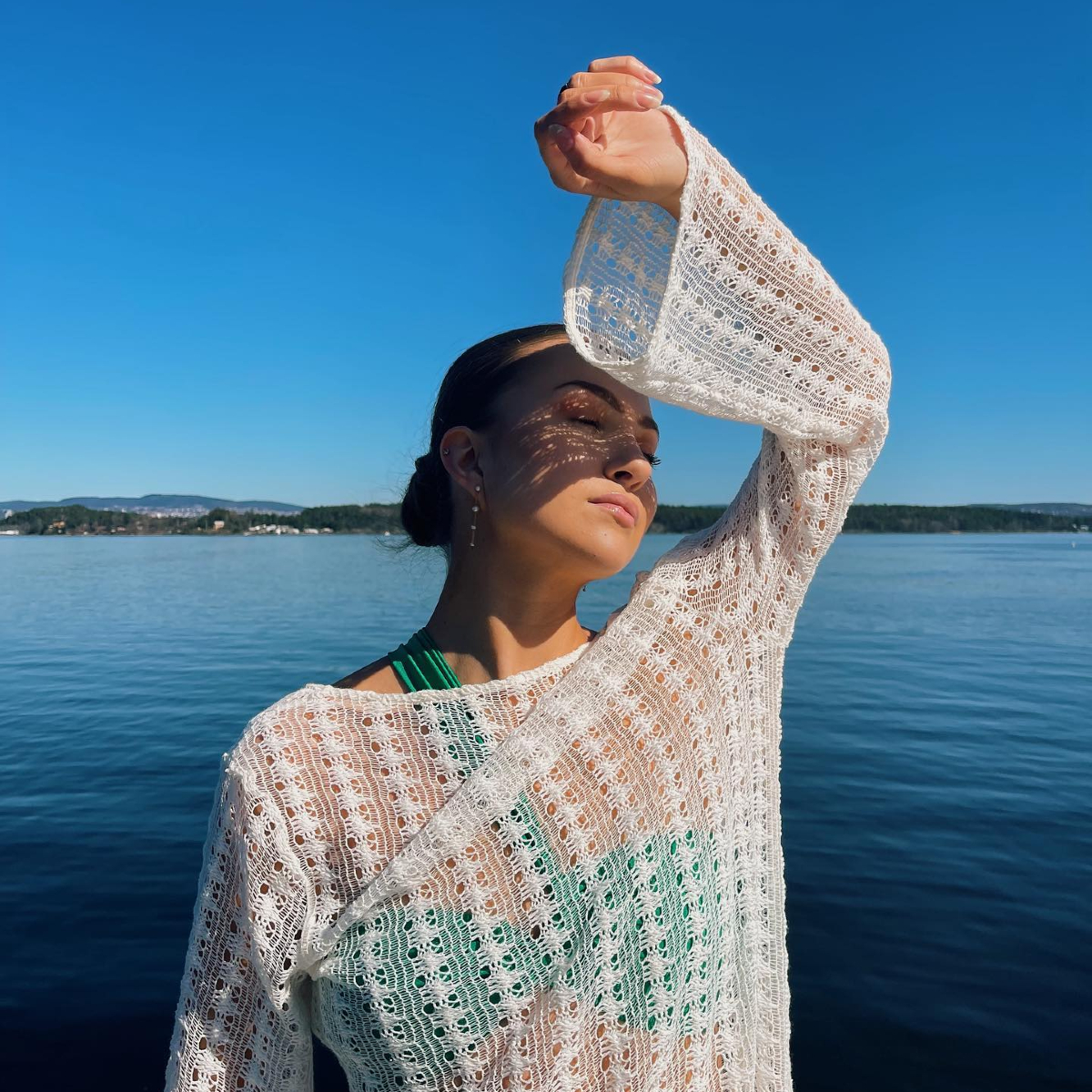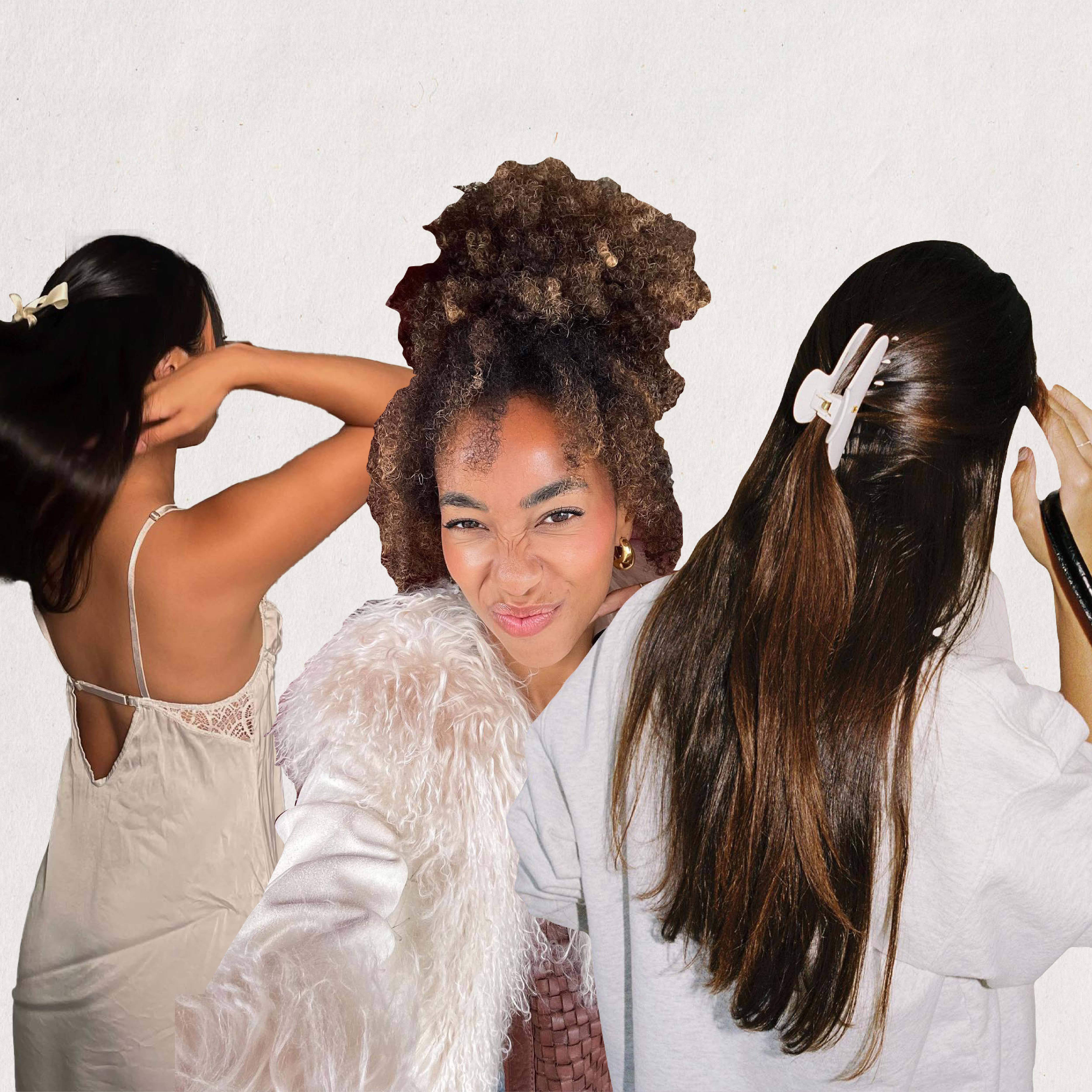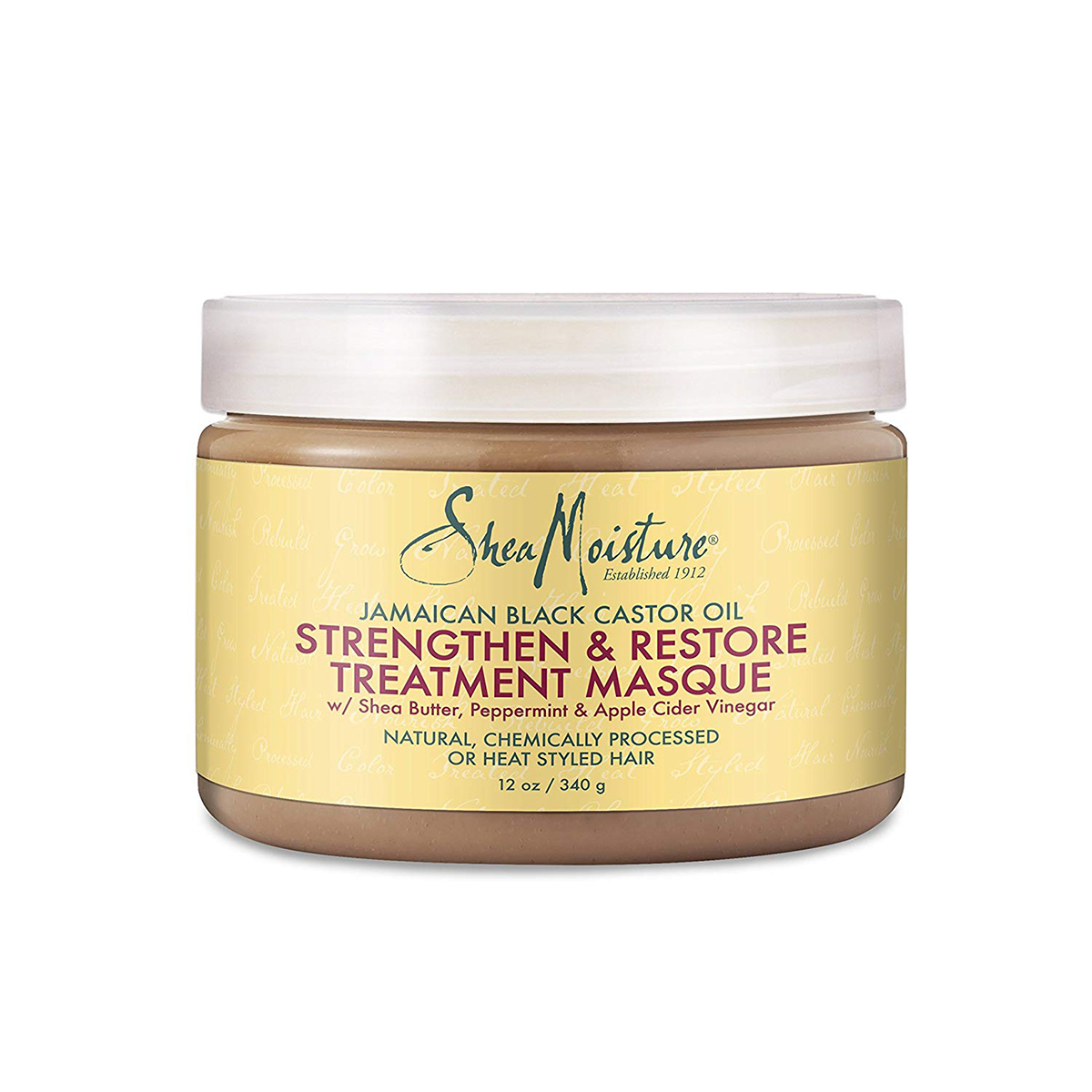Consider This Your Guidebook for Black Hair

If you're anything like me, you've spent years trying to figure out what your natural hair wants and needs. When I was younger, my mom took care of my hair, which typically involved twist-outs, the occasional hot comb, or a day off from school to head to the salon for cornrows or braids (a rite of passage for any Black girl at the time). When I hit high school, I begged her for a perm, which led to a continuous cycle of dying, frying, and chopping my extra-thick 4c hair on numerous occasions before I fully committed to it in its natural state.
My hair journey is common for many women of color. Going natural or simply maintaining your hair's natural texture is a process (as it should be). But no matter where you're at in your journey, we can all use a little guidance, and that's where a professional hairstylist comes in. Ahead, you'll hear from Marjorie Lightford—a celebrity hairstylist from the agency behind our former cover star, Issa Rae—on everything from misconceptions around Black hair to the different texture types and tips for transitioning your hair. But first, a little about her…

For those who aren't familiar with Texture Management, can you explain a little about the company and how you fit into that?
Texture Management was formed to fill the need for elite hair and makeup services tailored to performers' unique needs of color. I am one of their hair artists, specializing in hair color (certified through Redken). This allows me to provide whatever hairstyle (such as braids, cut, wigs, or smoothing) the client needs to complete the look from head to toe. Through Texture Management, I have styled hair for spec shoots, beauty shoots, red carpets, award shows, and more.

Most people outside of the Black community have little to no education about Black hair. What do you think is one of the biggest misconceptions and implicit biases held by wider society?
Honestly, I think most people have little to no education about hair outside of their own community. The bigger issue is that people do not understand curly hair and just how fragile some textures are within the curl community, regardless of race. Generally speaking, curly hair is the driest of any hair texture and needs constant love and nourishment.
Curly hair thrives with natural oils and does not have to be shampooed and manipulated daily. Consequently, when styling curly hair, especially tighter textures, the styles should be preserved for longer than a day.

What do you think are the biggest misconceptions that Black people themselves have about their own hair?
People of all races need to evaluate their hair and learn what products work best. For example, a volumizing shampoo is something that is not commonly used in the Black community. However, if you have oily hair that needs to be shampooed twice a week because your hair loses style and falls flat, a volumizing shampoo could do the trick.
People with curly hair often choose a smoothing shampoo or a hydrating shampoo, which could actually make some curly textures flat and lifeless.

How would you say the industry has evolved in the past 10 years when it comes to natural hair? Do you think Hollywood and the fashion industry have become more accepting of it?
Over the past 10 years, relaxers have been deprioritized in the Black community. Other presumed less-harmful chemicals began to take their place, such as the keratin treatments. It was not until we learned about formaldehyde that clients and stylists began to back off from the keratin treatments. That signaled the start of the chemical-free craze. Everybody wanted to be natural but still get their hair straightened. The problem was that most people’s hair would not last through humidity or exercising. When they had to shampoo it naturally, they did not know what to do in terms of styling. Their hair had uneven textures and was just difficult to manage. From there began the big chop phase, removing all compromised ends that were not natural in texture.
For those opting out of the big chop, protective styles that allowed them to grow out their hair and remove compromised ends little by little were chosen. Today, most people in the Black community avoid using chemical straighteners but still struggle to manage their natural hair. As a result, wigs, weft extensions, and lace closures have made a tremendous rise in our community.

"To truly care for your natural hair, it has to become a lifestyle," Lightford says. This rings true for so many women of color who may not know where to start when they decide to start putting effort into their hair's health, whether they have type 3a or 4c. Below you'll find a guide to the most important haircare terms, products, and tools you need to know, regardless of the stage you're currently in with your hair journey.
Terms to Know

Can you explain the difference between the various porosities when it comes to haircare?
Porosity, as it relates to hair, refers to how well your hair is able to absorb and hold moisture. There are three categories: low, normal, and high.
Low porosity hair has tight cuticles and is resistant to receiving water and moisture. It does not absorb easily. One tip: Use alkaline products while hair is damp.
Normal porosity means your hair does not have a challenge absorbing moisture or holding shine. However, excessive heat styling and the use of other chemicals on the hair can change the normal porosity.
High porosity hair is like having a bunch of holes in your hair. While your hair easily absorbs moisture, it can also lose moisture just as fast. Protein treatments and apple cider vinegar work extremely well to help fill in the gaps and holes in the hair's cuticle layer.

How would you describe the texture types 3a through 4c, and are there any products that can make management easier?
3a: Loopy "S" curls that are big and loose. To define hair, twist the hair around the finger while wet and let dry.

3b: Springier curls that have the circumference of a sharpie. They also have shrinkage and tend to have a coarser texture. Products that protect against humidity and frizz work great.

3c: Combination of curly and coily strands that are tightly coiled and experience the most shrinkage out of level 3. They are usually very dense strands, and their coils are voluminous and tight.

4a: Dense, springy coils with the circumference of a crochet needle. Use thicker natural products like shea butter.

4b: The curl is tighter and less defined—about a pen's circumference—with strands that range from fine and thin to wiry and coarse. Pre-treat with coconut oil before shampooing.

4c: Similar to 4b but denser. Less defined and more shrinkage. Strands can be fine, thin, and soft to wiry and coarse. It is very fragile. Use a creamy leave-in to help with the distribution of other styling products.

Although perms seem to be a thing of the past, there are still Black women who prefer this to natural hair. Can you let us in on what you should expect when going in for an appointment and how to maintain your hair's health after the treatment?
Getting a chemical relaxer in 2020 is just like eating at a fast-food chain that has been around for years. Most people choose not to do it, and if they go back to it, their body does not respond well. They do not make relaxers like they used to. Companies have chosen cheaper ingredients that are often more harmful.
Should you choose to get a chemical relaxer, it is important to see someone who does a lot of them and requires you to get deep conditions regularly. I would also find a seasoned stylist who has been doing hair since the '90s or early 2000s.

How would you define what a protective style is?
A protective style is anything that wraps your hair and seals your ends and can be kept for at least two weeks. One of the best things to do before getting a protective style is to get a haircut, removing all or most of your split ends. This way, when you remove the protective style, your hair has length and fullness from roots to ends.
Protective Styles to Try

Cornrows result from a three-strand braid that has hair added to each strand after completing one rotation sequence. The outcome is a raised braid that is typically very close to the scalp.

A sew-in results from braiding your natural hair in a cornrow style and hand-stitching weft extensions on top of the braids.

Jumbo twists are large sections of hair divided up into two strands and wrapped in the same direction.

Faux locs are installed by twisting or braiding the real hair and then wrapping additional hair around the shaft of the braid/twist.

Box braids are individual plaits that are usually divided by small, squared-off parts, or boxes, and have extension hair added to them for protection, length, and longevity of style.
Natural Hairstyles to Try

What you'll need to create a slicked bun or pony: Fonex Hair Gummy and Black Panther Edge Control.

What you'll need for an afro: Pureology Color Fanatic 21 Spray.

What you'll need for a healthy blowout: Kérastase Anti-Frizz Oil Serum, Kérastase Discipline Blow-Dry Smoothing Primer, and Kérastase Resistance Serum.

What you'll need for a twist-out: Aunt Jackie’s Moisture Rich Leave-In Conditioner, Aunt Jackie’s Argan Oil, and Eco Styler Gel.

What you'll need for edges and baby hairs: Fonex Hair Gummy and Black Panther Edge Control.
Tools to Own

Many women nowadays are product aficionados when it comes to their natural hair. Still, through trial and error, I’ve learned that the tools you use are equally as important as the products you use, whether your goal is retaining length or just maintaining a healthy head of hair. These are the tools you need.
To define curls and get a smooth blowout.
To detangle hair or comb out curls.
To define your curls' natural texture or to give volume to your hair.
To protect your hair from drying out at night.
For precision parting in hair or hair coloring.

For women who are thinking of transitioning to their natural texture, what tips would you give them?
Anyone who is thinking about transitioning to their natural texture should consult a natural-hair specialist. The transition is different for everybody, so do not compare your experience to others' and vice versa. Find what works for you.
Lastly, through your work, how do you hope it contributes to changing Black haircare and the way Black hair is perceived?
I want my work to show that healthy hair is good hair. It is not about the texture or diameter of your curl but about giving each head of hair what it needs to prosper. Curly hair is limitless, and I want to showcase its versatility by bringing various coloring, cutting, and styling techniques rarely seen on curly textures. Curly hair is truly multidimensional and does not have to be altered (textured-wise) to fit in. It is beautiful just the way it is.
Up Next: Meet the Hairstylists Redefining Natural Hair in Hollywood
This article was originally published at an earlier date and has since been updated.
-
 The Vibe Is Endless Summer—32 Fashion and Beauty Picks Setting the Mood
The Vibe Is Endless Summer—32 Fashion and Beauty Picks Setting the MoodHere's my entire shopping list.
By Raina Mendonça
-
 A Celebrity Stylist Told Us the Spring Styling Hack She's Using on Her Clients
A Celebrity Stylist Told Us the Spring Styling Hack She's Using on Her ClientsHint: It's one you can rent out.
By Ana Escalante
-
 This Harsh Truth From Allison Bornstein Made Me a Better Shopper—Let Me Explain
This Harsh Truth From Allison Bornstein Made Me a Better Shopper—Let Me ExplainIt'll set you free.
By Courtney Falsey
-
 I Just Learned That This Sneaky Ingredient Was Actually Making My Curls Dry AF
I Just Learned That This Sneaky Ingredient Was Actually Making My Curls Dry AFIt was a serious face-palm moment.
By Shawna Hudson
-
 I Started a Strict Hair Routine With 16 Products—Now My Hair Is 4 Inches Longer
I Started a Strict Hair Routine With 16 Products—Now My Hair Is 4 Inches LongerThe proof is in the pictures.
By Kaitlyn McLintock
-
 This Organic Skincare Brand Is Actually Magic for My Irritated, Acne-Prone Skin
This Organic Skincare Brand Is Actually Magic for My Irritated, Acne-Prone SkinHealing AF.
By Shawna Hudson
-
 Caffeinated Haircare Products Unlock Crazy-Fast Hair Growth—Here's Why
Caffeinated Haircare Products Unlock Crazy-Fast Hair Growth—Here's WhyDerms explain.
By Kaitlyn McLintock
-
 Run, Don't Walk—I Found a $20 Bond-Building Shampoo That Truly Works
Run, Don't Walk—I Found a $20 Bond-Building Shampoo That Truly WorksAnd the hair mask is just as good.
By Shawna Hudson












